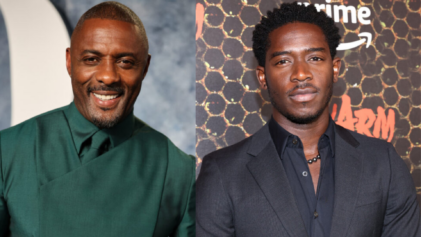This has been a good year for the Hackney-born actor Idris Elba, from playing Luther in the acclaimed TV detective show, to being named eighth in a power-list of Britain’s most influential Black people. His performance as Nelson Mandela in “Long Walk to Freedom” is already picking up Oscar buzz. Elba’s trajectory is a homegrown success story and, as a man of African descent, I am inspired to see another doing so well in the U.K. and abroad. But it makes me wonder: where are his female counterparts?
There is an undeniable scarcity of Black female actors in film and television. Of the female actors that we see, it’s even rarer to see one of a darker skin tone. When British dual-heritage actor Thandie Newton was cast as Olanna, the beautiful, voluptuous, brown-skinned Igbo heroine of the film adaptation of Chimamanda Ngozi Adichie’s novel “Half of a Yellow Sun,” there was a furor. The 2006 book, which won the Orange prize for fiction, tells the story of the Biafran war. Many saw the casting of Newton as a step in the right direction for Hollywood, which has been notoriously slow to greenlight films featuring Black actors in leading roles, but not everyone was happy. An online petition sprang up, demanding the film be recast.
The petitioners wrote: “Thandie Newton is an accomplished and talented actress. However, she is not Igbo, she is not Nigerian, and she does not physically resemble Igbo women in the slightest. This petition is important because we live in a world where mass media sells us the belief that white, and anything close to white, is right, and Black is not only wrong, it is unattractive, and undesirable. The casting of Thandie Newton as an Igbo woman is not only false, it helps promote the idea that light skin and curly hair is the only way a Black woman can be represented in the media, because that is the only way they are attractive. This casting choice is an abomination to Igboland.”
This reaction seems to highlight a worrying trend throughout the media in which the dark-skinned Black woman seems almost non-existent. We rarely see her dancing in R&B videos: she has been replaced as the love interest by her light-skinned or white sisters. We do not even see her in the faces of our Black female pop stars. Take Rihanna, Beyoncé and Nicki Minaj, all light-skinned with European features and blond weaves. Even in the world of fashion, the image of the Black woman has been all but erased from the catwalk. As Naomi Campbell recently said, opportunities for Black models seem scarce. The most successful Black female model is now London-born Jourdan Dunn, who has campaigns for Burberry, Calvin Klein, and Victoria’s Secret. Dunn is 5 feet 10 inches tall, rakishly slender and, most importantly, light-skinned.
Where have all our dark-skinned sisters gone? What does it mean that the only acceptable Black faces are light-skinned? This is the reality of colorism.
Read the full story at theguardian.com.


